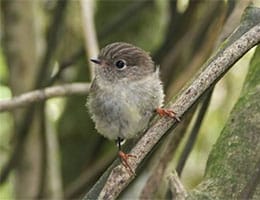 Ornithology is the branch of zoology focused on the study of birds . The term comes from the scientific Latin ornithologia .
Ornithology is the branch of zoology focused on the study of birds . The term comes from the scientific Latin ornithologia .
A bird is an animal from the group of vertebrates, whose body is covered by feathers . The presence of a pair of wings and a horny beak are other characteristics of these creatures that are analyzed by ornithological experts.
The origins of ornithology are remote and can be located in the Stone Age , when prehistoric man began to represent bird figures in drawings. The need to hunt these animals to use them for food; the domestication and breeding of poultry; and falconry contributed, little by little, to the development of knowledge in this field.
As a specialized science , ornithology advanced over time. Numerous scientists, through their studies and publications, were key in this process. Certain technological discoveries such as telescopes and other optical instruments that made it possible to observe wild specimens in different areas were also essential.
One of the particularities of ornithology is the relevance of the contributions of amateurs . There are guides for observing and identifying birds that help many people get into the discipline and carry out their own work, often following the scientific method .
Among the common applications of ornithological knowledge, we can name the efforts carried out for the conservation of species, the treatment of certain animals as pests and the use of meat, eggs and feathers.
Although ornithology has a very extensive history, it is not as common as other sciences. However, one of its peculiarities is that anyone can start practicing it with a minimum of preparation and instruments, since it does not require a large financial investment.
As in any discipline of observation, we should not underestimate the importance of the “pencil and paper” duo, necessary for scientists in general and especially useful when we are in the middle of a forest trying to discover the secrets of birds. It is true that today many people take advantage of certain electronic devices such as phones and tablets, especially those that include a stylus, but doing without batteries, screens and all the complications that come with them is not bad at all.
 The ornithologist's basic tool is binoculars , since our eyesight is not enough to observe the details of birds several meters away. This does not mean that we cannot get by with a notepad and a pencil to start, but that without an instrument to enhance our eyes we will surely be very limited.
The ornithologist's basic tool is binoculars , since our eyesight is not enough to observe the details of birds several meters away. This does not mean that we cannot get by with a notepad and a pencil to start, but that without an instrument to enhance our eyes we will surely be very limited.
One of the most general pieces of advice for those who are about to take their first steps in the world of ornithology is to get a partner who has experience, preferably one who knows the birds in the area where we want to start. This is not always possible, but it can prevent us from many typical mistakes and oversights as well as giving us invaluable advice that helps us develop our true talent.
Another good tip is to start very early in the morning, since this is the time of day when we can see the greatest number of birds. Between those who are nocturnal and those who wake up early, we surely have enough material to study. It is very important to move making as little noise as possible, to avoid scaring them away.
In addition to binoculars, the other necessary device is the camera . Hours, days and months of work patiently observing birds, taking note of their behaviors and the characteristics of their body deserve a beautiful and complete album that we can attach to our research.
